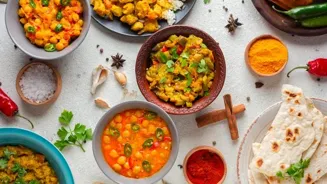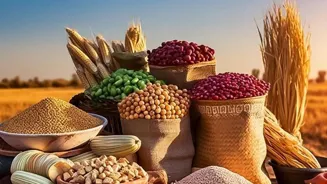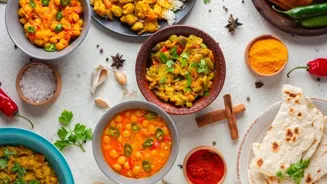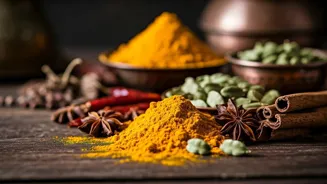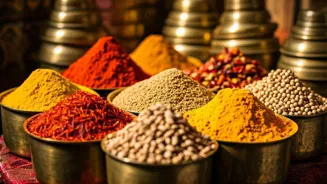Delve into India's rich food tapestry! From spices to thalis, explore the diverse flavors and cultural significance. Dive in now!
Namaste, food lovers! India, a land celebrated for its vibrant culture and breathtaking
landscapes, boasts an equally diverse and fascinating food culture.
It's not merely about taste; it's a journey through history, tradition, and the unique geographical landscapes that have shaped culinary practices for centuries.
Forget standardized menus, and prepare to explore the hidden gems and surprising truths behind the flavors that make Indian cuisine so globally adored. This ain't your regular restaurant rundown; we're diving deep into the heart of Indian food! So, grab your chai, and let's dig in.
The Spice Route's Enduring Legacy – More Than Just Masala!
Everyone knows India loves its spices, but the story behind them is truly captivating. Forget just sprinkling turmeric; think centuries of trade routes where India was the queen of spice production.
Black peppercorns from Kerala were literally worth their weight in gold, shaping global economies and driving explorers across oceans. When you taste that perfect blend of cardamom, cloves, and cinnamon, you're experiencing a history lesson on your palate.
Different regions boast unbelievably distinct spice blends, passed down through generations within families. A "garam masala" ain't just 'garam masala'; each household has its secret, slightly tweaked version.
Think about it, the aromatic allure of saffron from Kashmir, used sparingly, signifying luxury and celebrations. Or imagine the intense heat of fiery chilies from Andhra Pradesh, transforming the simplest dishes into explosions of flavor.
The use of spices, deeply rooted in Ayurvedic traditions, adds both flavour and medicinal value to the food. These aren’t just ingredients; they are legacies.
Understanding the role and history of spices is key in understanding India's culinary tapestry It's a journey that starts with the soil and ends with an explosion of flavor and aroma. And it's a story far richer and deeper than the average curry powder on your shelf.
Beyond the familiar, explore regional specialties. Imagine fragrant Nagaland chili, renowned for its unique aroma. Understand how different cultivation practices affect the end flavor and the subtle variations that make regional spice blends so unique.
It's more than just what you put in the dish; it's about the where, the how, and the why behind each spice. The "masala dabba," that spice box in every Indian kitchen, is a treasure chest holding not just ingredients, but also centuries of culinary wisdom.
So next time you savor a dish, remember the spice route's incredible journey.
Regional Vegetarianism – A World Beyond Paneer Butter Masala!
India has a large vegetarian population, but don't imagine it’s all just one style. The concept of vegetarianism varies region to region, each with specific preferences and influences. While paneer butter masala might be famous, India offers countless other veggie options.
From the simple daal and rice to more sophisticated delicacies like gatte ki sabzi or avial, there's a vegetarian delight to suit every taste. This diversity is due to religious influences, climate conditions, and farming practices.
Northern India favours dairy-rich dishes while southern India focuses on using coconut and lentils.
In South India, you can find lots of vegetarian dishes made with rice and lentils, like dosas, idlis, and vadas. They often use tamarind and coconut to give it a tangy, rich flavor.
Head north for heavier dishes, like creamy dals (lentil soups) and vegetable curries served with naan or rotis. And don't forget the desserts! From rasgulla in the east to peda in the west, indian sweets are often purely vegetarian delights.
Gujarat offers a unique style of sweetened dal alongside savory snacks, reflecting the region's sweet tooth! The vegetarian diet is deeply interwoven with cultural and religious beliefs, creating a rich and fascinating diversity.
Many communities embrace dietary restrictions on specific days of the week or during festivals, leading to the creative development of dishes. The creativity lies in finding substitutes for all the foods they cannot consume. This is a testament to the innovative spirit of Indian cooks.
Rather than seeing it as a limitation, vegetarianism is celebrated as a path to a healthier more sustainable way of life. So, ditch the paneer stereotype and embark on a vegetarian food adventure across India, you will be pleasantly surprised!
The Power of Fermentation - From Dosa to Dhokla, It's All Alive!
Forget instant noodles; India has been mastering fermentation for centuries, long before it became a trendy health fad. Fermentation is a food processing technique that leads to flavour enhancement, preservation and certain nutritional value addition to food.
From the south Indian staple of dosa made with fermented rice and lentils, to the lightness of Gujarati Dhokla, to idli fermentation plays a huge role in Indian cuisine. Fermented foods are easy on the digestion and are considered beneficial for gut health.
Fermentation is not just a cooking technique; it is a tradition.
Imagine the tangy freshness of curd, handcrafted at home for generations, adding probiotic goodness to your digestive system. Or the complex flavor of kanji, a fermented carrot drink in North India, enjoyed during the winter.
These are more than just recipes; they are living cultures. Fermentation is not about making foods last longer but it also enhances the taste profile. The tanginess, the slight sourness, and the complex aromas all come from the fermentation process.
Every fermentation is unique and is based on the micro organisms present in different weather conditions.
From the simple act of making yogurt at home, handed down for countless generations to the artistry of creating diverse fermented foods, Indian kitchens showcase a harmonious relationship with nature.
Each region boasts its unique style of fermentation, reflecting the local climate and ingredients available. It's worth knowing more about this time-honoured technique.
Regional Thalis - A Complete Culinary Journey on a Plate!
Imagine a culinary expedition across the Indian subcontinent without leaving your chair. That’s the magic of a thali, a complete meal served on a single platter. Forget ordering a la carte and prepare for this immersive experience.
A thali is not just a meal; it can take you on a tour of the entire region. Each element of the thali, from rice to dal to vegetables to sweets to pickles, represents different flavor and texture profiles.
It's like a symphony on your plate, with each component playing a crucial role in the overall harmony.
A Gujarati thali might offer sweet dal, dhokla, and vegetable curries served with roti.
In contrast, a Rajasthani thali explodes with spices, presenting daal baati churma, gatte ki sabzi, and papad ki sabzi (using poppadoms). The food is arranged to create a beautiful display. Every thali's food reflects the dietary pattern and ingredients available.
South Indian thalis often involve rice, sambar, rasam, and various vegetable preparations served on a banana leaf. The order of the thali is very important too, often starting with the milder dishes, then moving on to the spicier ones.
The thali is not just about the variety of dishes; it symbolizes a wholesome balanced meal. It represents hospitality and completeness. So, order a thali and embark on a flavour adventure across the region to explore the diversity of Indian cuisine.
It's an unforgettable experience, a true celebration of food and culture.
Mocktails and Sharbat - Chilling in the Indian Style!
Beat the Indian heat the traditional way! Forget fancy cocktails, India has a rich tradition of cooling summer drinks. From refreshing nimbu pani (lemonade) to the creamy goodness of lassi, Indian summer drinks are not only delicious but also hydrating and healthful.
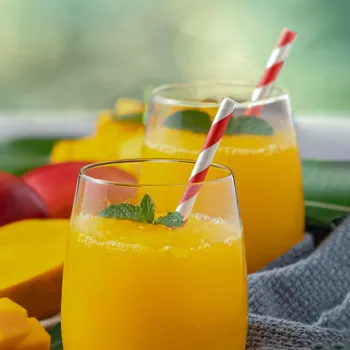
Most traditional drinks are natural and seasonal using locally available fruits and spices. They are great substitutes to aerated and sugar loaded drinks found in the market. The refreshing sharbats of North India are usually made with rose, sandalwood, and khus.
In the south, you'll find neer mor, a spiced buttermilk, a perfect thirst quencher packed with probiotics. Don't forget aam panna, a raw mango drink. It's both sweet and savoury, and it's known for its cooling properties.
And then there's thandai, a milk-based drink infused with nuts, seeds, and spices mostly made during festivals and special occasions. These drinks are often served during festivals, enhancing their charm and feeling of festivity. And they are all really good for your health and hydrating you!
They are natural, they are delicious and they are perfect for dealing with the heat and keeping your gut happy. So ditch the fizzy drinks and embrace India's refreshing drinks. You won't regret it!
Sweet Endings – Beyond Gulab Jamun: a Regional Sweet Symphony!
"Kuch meetha ho jaye?" Yes, let's end with something sweet! But, beyond the ever-popular gulab jamun, India is a land of endless sweet creations, a true sweet symphony that keeps on playing.
There's a regional variety of sweets waiting to be discovered, from the sandesh of Bengal to the Mysore Pak of Karnataka, each with its own unique ingredients and preparation ways. Indian sweets are more than only food; they are an integral part of celebrations and festivals.
Think about the delicate chhena poda of Odisha, caramelized baked cheese, or the peda of Mathura, a creamy milk-based treat. And do not forget the laddoo of Motichoor or Boondi that add joy to every event in every corner of the diverse nation.
Each sweet tells a story, reflecting the local ingredients and culinary traditions. The textures range from crunchy to chewy to smooth and creamy, catering to every palate. Many sweets are also prepared with ghee, nuts, and dried fruits.
The preparation sometimes involves hours of slow cooking and stirring, a labor of love that adds to their specialness. Many sweets are only prepared during a particular season. This sweetness is not just for the tongue; it is a mark of happiness and festivity.





